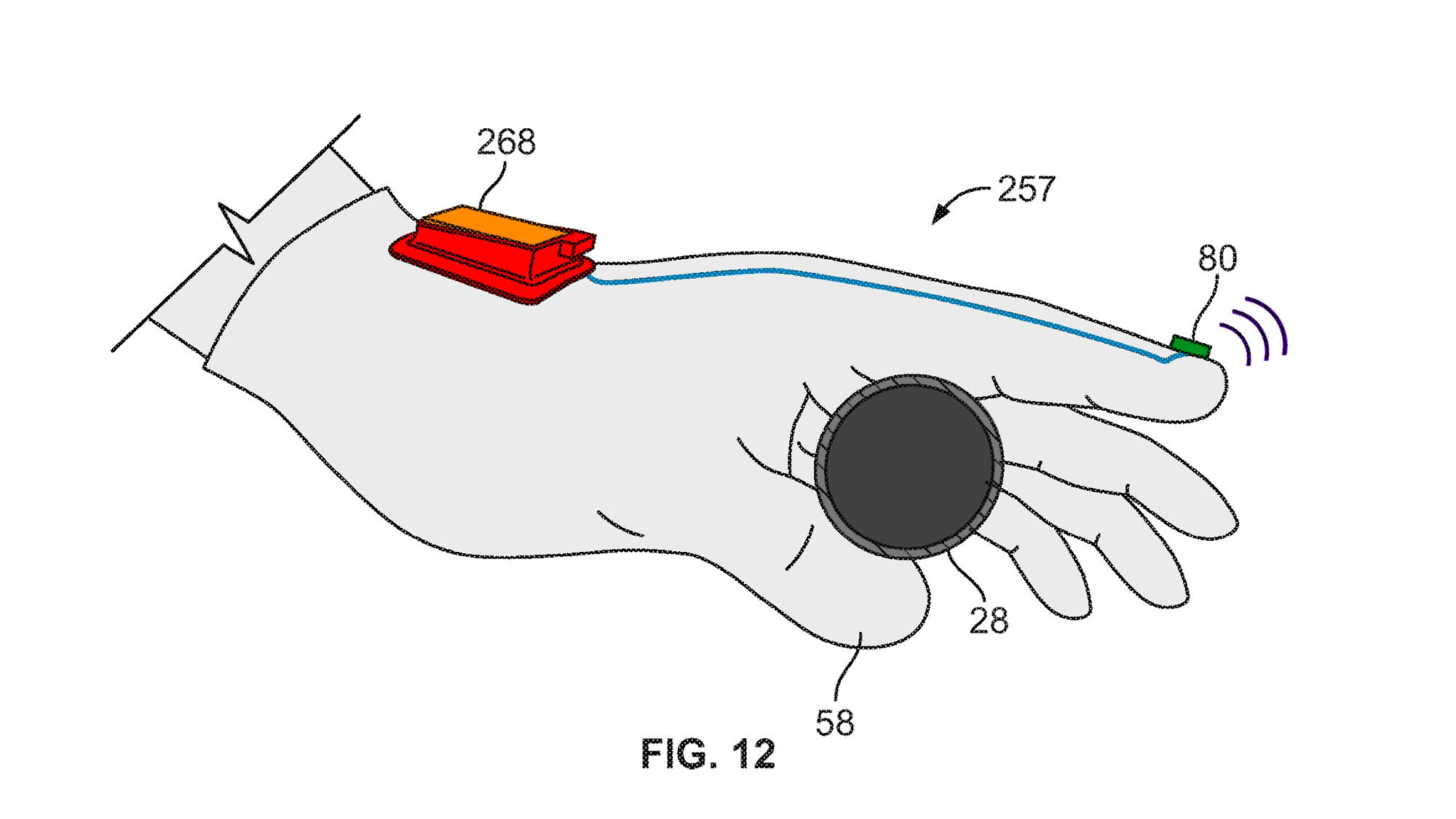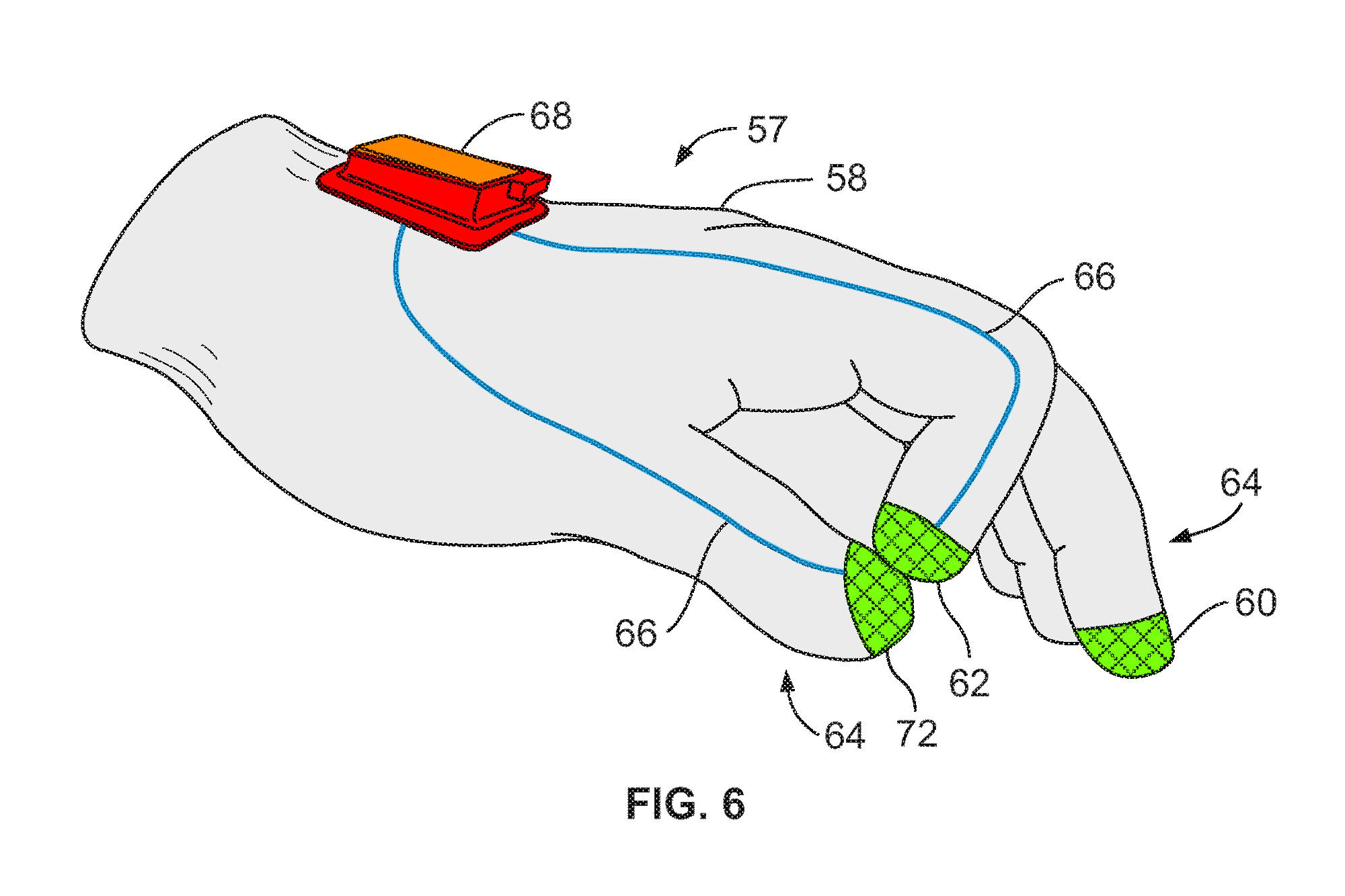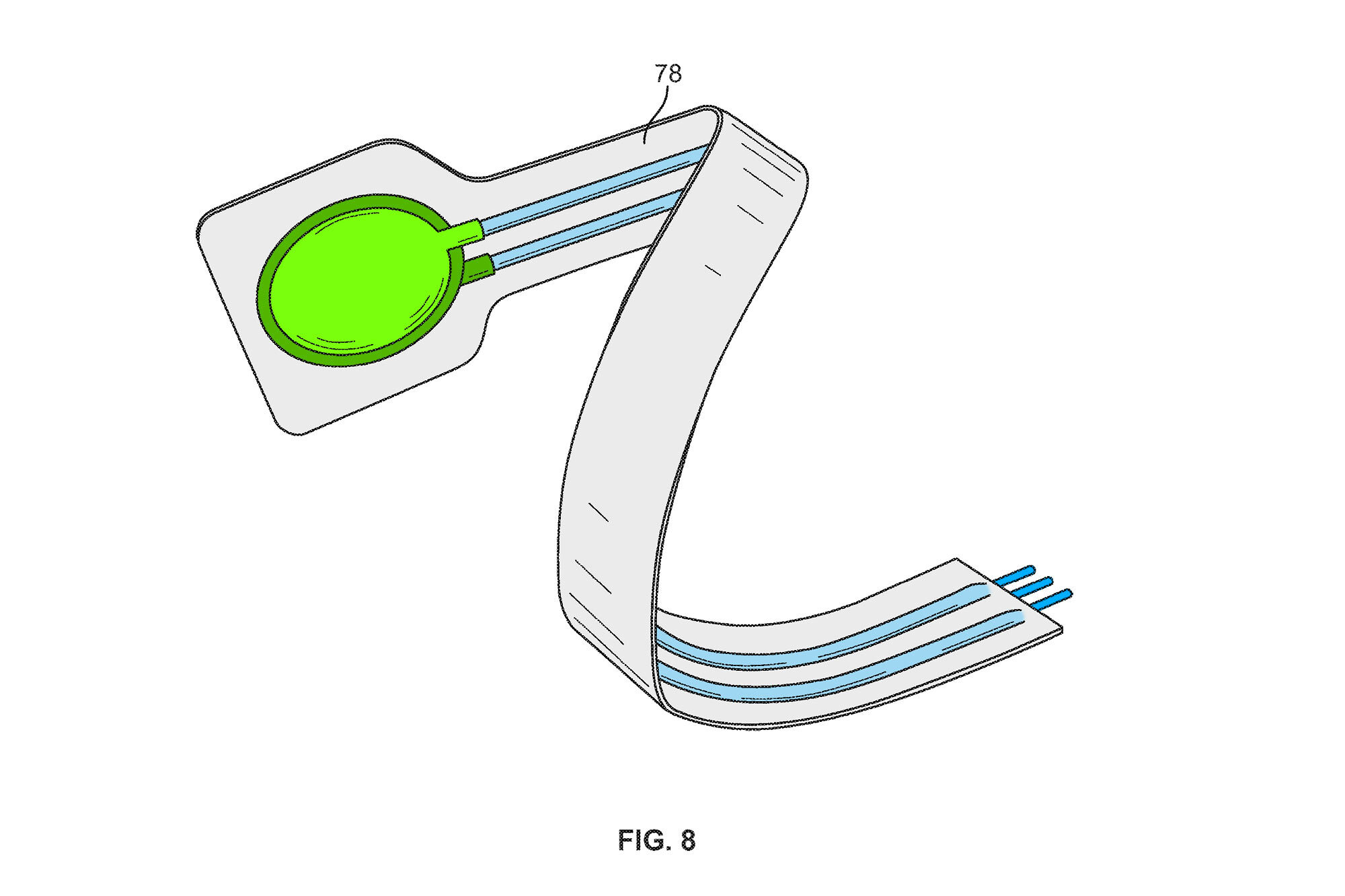On April 1st 2021, SRAM filed a patent for wearable wireless shifters, or suspension control remotes, integrated directly into a rider’s gloves. The technology would use a set of pressure-sensitive resistors built into the fabric of the glove, to wirelessly actuate derailleur shifting in a highly programmable way. Flicking or extending a finger, or compression of the fingertip against the grip, or even the thumb tip, signals to the derailleur to perform a shift.
Theoretically, a a rider could shift through gears no matter their hand positioning. Faster, easier and even safer shifting are on the table. It could even save on weight; a single shifter on one hand operating both the front and rear derailleur stands to be lighter than any handlebar-mounted shifting technology, electronic or otherwise.
Here’s a closer look at the proposition.

SRAM’s Wearable AXS Shifter
The patent in question (US11703118B2) shows several drawings wherein a glove furnished with one or more pressure-sensitive resistors or accelerometers (green), positioned on the pad of each finger, or on the tip of each finger – seen in Fig. 5, above, wired up to an electronic control unit (orange), affixed in a tool-free fashion to the backhand region of the glove via some kind of mount (red).
SRAM describes how the electronic control unit is able to wirelessly communicate with an electronic derailleur (front or rear), or an electronic suspension adjuster, to shift gears or switch between damping modes on demand. Nothing special there… it’s the proposed method of signalling to the control unit to actuate shifting that is somewhat futuristic.

How does it work?
The patent outlines a number of ways in which this wearable shifter could trigger a shift:
- Flicking of the index finger
- Touching the thumb and any of the other fingers together, perhaps with some threshold force
- Hyper-extension of any of the 5 digits beyond the normal operating range
- Compression of the tips of the fingers rather than the pads
- Any combination of the above actions
If SRAM had the appetite, they could make this system very customizable, such that individual riders could program the control unit to respond to unique triggers that they find most intuitive, or easy and safe to execute.
An excerpt from the patent document details one way in which the inventors foresee it in use:
“A right-hand actuator would cause a shift of the rear derailleur in one direction, a left-hand actuator would cause a shift of the rear derailleur in the other direction and activating both actuators simultaneously would toggle the front derailleur to the other of its current inboard or outboard position”. Sounds like the normal thinking behind eTap shift logic, just without the need for shift levers.
The patent states any movement programmed to trigger a shift should not be encountered in the normal course of riding, to avoid unintended shifts.
With the wide variety of hand and finger shapes seen throughout the population, SRAM may have to offer a vast array of sizes, or even fully-customized gloves to make this technology practical for all users. Getting the pressure-sensitive resistors or accelerometers positioned as intended is fundamental to its success.
Glove-Mounted AXS Shifters for Road Cycling


The wearable shifter concept described by SRAM seems most applicable to road riding. Indeed, most of the images seen throughout the patent document depict a road bike.
Hmm… but how many roadies do you know that regularly wear full-finger gloves? Will you need to wear full-finger gloves on those hottest summer road rides? And what happens when winter comes and you need thicker gloves?
On a drop bar, there are three hand positions that a rider might be pedalling along in at any time. There’s the aero position in the drops, an upright position on the tops, with the hoods position between those extremes.
It would be most convenient, and safe, to shift from any of those positions, without having to change hand position. You can run SRAM eTap AXS Wireless Blips anywhere on the bar, and you are not limited to two. But, adding more shifters means adding more wires and thus, more weight. It will also clutter the cockpit, reducing the aesthetic value.
I’m not much of a road cyclist myself, but I can’t see that solution being overly palatable to gram counters. SRAM’s glove-integrated shifter technology solves this problem, putting the shifter on the rider instead of the bar.
Marginal gains?
Another advantage of this technology is that it could allow a rider to more easily, and safely, brake and change gears simultaneously. We wonder if that could actually present an advantage to a rider during a descent of a big Col in the Alps. Descending on the drops, the rider might be braking hard before a corner. Meanwhile, they could send a single finger into full extension, changing to an easier gear such that they’re subsequently in a better gear for getting back up to speed once they’re through the corner.
As demonstrated beautifully by Tom Pidcock, not every mountain stage of the Tour de France is won on the climbs. If another marginal gain is to be had, riders and teams will surely be checking it out.
Wearable Wireless Shifters and Remotes for Mountain Biking
Though the advantages are perhaps less obvious, it’s possible a glove-integrated actuator could be useful off-road, too, for shifting or otherwise. That said, with mountain biking being a little less predictable than road riding, with social rides often a very stop-start affair, it seems there’d be greater scope for accidental triggering of a shift.
In a more controlled, competition environment, however, it could be advantageous in other ways. While the patent focuses on gear changing, it also mentions potential use as a remote for suspension adjustment. It’s not mentioned by the inventors, but there’s good scope for using it to actuate an AXS dropper post, too.

Imagine switching your suspension from lock to open mode by pushing the tip of your finger into the grip? Or, by pressing the tip of your index finger into the tip of your thumb? Or even, dropping or popping your dropper seat post by doing the same? To my mind, it seems there could be an ergonomic advantage here. A more traditional handlebar-mounted remote requires the rider to move hand position, sometimes requiring a slight loosening of their grip. These wearable shifters could allow riders to maintain a more consistent grip on the bar.
Certainly, there are arguments to be made both ways as to whether the wearable solution would be safer and easier, or more clumsy and therefore dangerous, than the handlebar-mounted remote method. But, we trust that a company like SRAM has the financial capacity and expertise to collect the necessary data to learn more either way. And we already know their top-sponsored MTB athletes have been customizing AXS buttons for years, first spotted on Kate Courtney’s and now Nino Schurter’s bikes, too.
So why not Voice-Activated Shifting, too?

A final method, thrown in almost as an afterthought, is the possibility of voice-activated shifting. Fig. 15 shows a wireless control device (orange) and microphone (84) rigged up to a rider’s helmet. We regularly operate our smartphones through voice, it’s not too far-out to suggest we could trigger a shift by speaking. This one is entirely hands-free, and arguably the safest method, if not the sexiest, of the lot.
Hey Siri, make it easier for me to get up that next climb!

